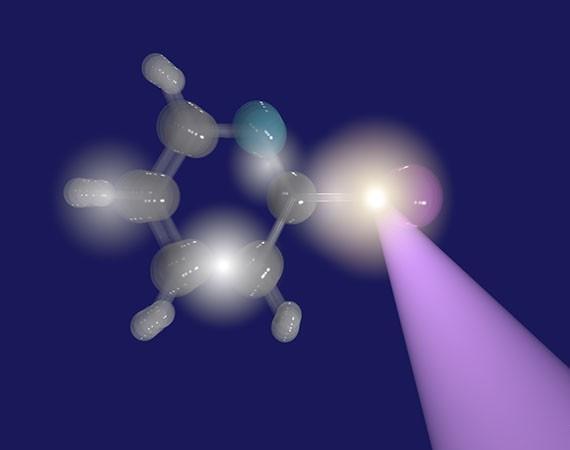
1st Images of Atoms’ Quantum Dance Captured
In a groundbreaking achievement, researchers at Goethe University Frankfurt have managed to capture the first direct images of quantum zero-point motion in a larger molecule. This phenomenon, where particles move even at absolute zero temperature, was observed using the advanced COLTRIMS reaction microscope. By targeting the molecule with high-intensity, ultrashort X-ray pulses, the team could reconstruct its quantum motion.
Quantum mechanics is a fundamental theory that describes the behavior of particles at the atomic and subatomic level. One of the most fascinating aspects of quantum mechanics is the concept of zero-point motion. Even at absolute zero temperature, particles do not come to a complete standstill. Instead, they continue to move in a random and unpredictable manner, known as quantum zero-point motion.
This phenomenon has been observed in various systems, including atoms and molecules. However, until now, it has been challenging to directly visualize the quantum motion of larger molecules. This is because the motion is extremely rapid and the particles are extremely small, making it difficult to capture images of their behavior.
The researchers at Goethe University Frankfurt have overcome this challenge by using the COLTRIMS reaction microscope. This advanced instrument uses high-intensity, ultrashort X-ray pulses to ionize the molecule and generate a charged particle that can be detected. By analyzing the momentum and energy of the detected particles, the team can reconstruct the quantum motion of the molecule.
In their experiment, the researchers targeted a molecule of iodine oxide (IO) with the X-ray pulses. The molecule was chosen because it has a relatively simple structure and is easy to manipulate. The team used the COLTRIMS reaction microscope to ionize the molecule and generate a charged particle that could be detected.
The resulting images show the quantum motion of the molecule in unprecedented detail. The images reveal the movement of the atoms within the molecule, as well as the way they interact with each other. The team was able to capture the motion of the atoms over a period of several hundred femtoseconds, which is an incredibly short period of time.
The images also reveal the quantum nature of the motion. The atoms do not move in a predictable and deterministic manner, but rather in a random and unpredictable way. This is because the motion is influenced by the principles of quantum mechanics, which govern the behavior of particles at the atomic and subatomic level.
The achievement of the researchers at Goethe University Frankfurt is significant because it provides new insights into the behavior of particles at the quantum level. The images obtained by the team will help scientists to better understand the principles of quantum mechanics and how they apply to larger molecules.
The researchers are also excited about the potential applications of their discovery. The ability to visualize the quantum motion of larger molecules could lead to new technologies and materials with unique properties. For example, the discovery could lead to the development of new materials with improved conductivity or optical properties.
In addition, the achievement of the researchers at Goethe University Frankfurt highlights the importance of basic scientific research. The discovery was made possible by the team’s use of advanced instrumentation and their willingness to push the boundaries of what is thought to be possible. The achievement demonstrates the power of human curiosity and the importance of supporting basic scientific research.
In conclusion, the researchers at Goethe University Frankfurt have achieved a major breakthrough by capturing the first direct images of quantum zero-point motion in a larger molecule. The achievement provides new insights into the behavior of particles at the quantum level and has the potential to lead to new technologies and materials. The discovery is a testament to the power of human curiosity and the importance of supporting basic scientific research.
Source:






